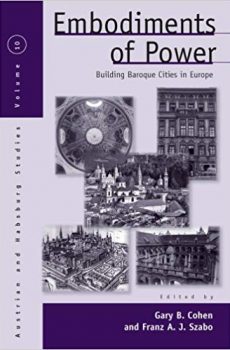
Embodiments of Power
8,400.00₹ 4,250.00₹
The period of the baroque (late sixteenth to mid-eighteenth centuries) saw extensive reconfiguration of European cities and their public spaces. Yet, this transformation cannot be limited merely to signifying a style of art, architecture, and decor. Rather, the dynamism, emotionality, and potential for grandeur that were inherent in the baroque style developed in close interaction with the need and desire of post-Reformation Europeans to find visual expression for the new political, confessional, and societal realities. Highly illustrated, this volume examines these complex interrelationships among architecture and art, power, religion, and society from a wide range of viewpoints and localities. From Krakow to Madrid and from Naples to Dresden, cities were reconfigured visually as well as politically and socially. Power, in both its political and architectural guises, had to be negotiated among constituents ranging from monarchs and high churchmen to ordinary citizens. Within this process, both rulers and ruled were transformed: Europe left behind the last vestiges of the medieval and arrived on the threshold of the modern.
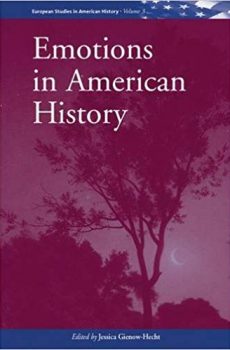
Emotions in American History
8,400.00₹ 3,295.00₹
The study of emotions has attracted anew the interest of scholars in various disciplines, igniting a lively public debate on the constructive and destructive power of emotions in society as well as within each of us. Most of the contributors to this volume do not hail from the United States but look at the nation from abroad. They explore the role of emotions in history and ask how that exploration changes what we know about national and international history, and in turn how that affects the methodological study of history. In particular they focus on emotions in American history between the 18th century and the present: in war, in social and political discourse, as well as in art and the media. In addition to case studies, the volume includes a review of their fields by senior scholars, who offer new insights regarding future research projects.
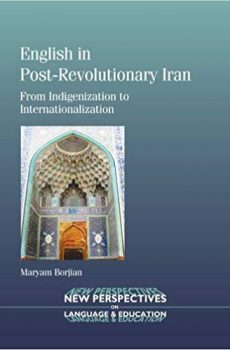
English in Post-Revolutionary Iran: From Indigenization to Internationalization
8,990.00₹ 4,290.00₹
This book unravels the story of English, the language of ‘the enemies’, in post-revolutionary Iran. Drawing on diverse qualitative and quantitative fieldwork data, it examines the nation’s English at the two levels of policy and practice to determine the politics, causes, and agents of the two diverging trends of indigenization/localization and internationalization/Anglo-Americanization within Iran’s English education. Situating English in the nation’s broader social, political, economic, and historical contexts, the volume explores the intersection of the nation’s English education with variables such as power, economy, policy, ideology, and information technology over the past three decades. The multidisciplinary insights of the book will be of value to scholars of global English, education policies and reforms and language policy as well as those who are specifically concerned with education in Iran.

Eyewitness to Irish History
1,750.00₹ 990.00₹
Through sources ranging from ancient forsundun (praise songs) and the hero kings to newspaper accounts, public decrees, and even graffiti, this book offers vivid portraits of major events and everyday life in Ireland through the centuries beginning with Golamh, the legendary leader of the band of Iberian Celts who settled the island more than three thousand years ago, and concluding with gripping accounts by those on both sides of the bloody civil conflict in Northern Ireland.

Forging Political Identity
8,400.00₹ 7,895.00₹
Escaping the traditional focus on Paris, the author examines the divergent political identities of two occupational groups in Lyon, metal and silk workers, who, despite having lived and worked in the same city, developed different patterns of political practices and bore distinct political identities. This book also examines in detail the way that gender relations influenced industrial change, skill, and political identity. Combining empirical data collected in French archives with social science theory and methods, this study argues that political identities were shaped by the intersection of the prevailing political climate with the social relations surrounding work in specific industrial settings.
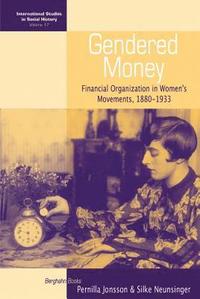
Gendered Money
8,400.00₹ 1,740.00₹
As economic citizenship was a pre-condition of full citizenship, the lack of economic autonomy was an important motivation during the early stages of the women’s movement. Independent of their class background, women had less access to not only financial resources but also social and cultural capital, i.e., member’s commitment. Resources are therefore of particular interest from a gender perspective, and this book sheds light on the importance of resources for women’s struggles for political rights. Highlighting the financial strategies of the first wave of Swedish middle-class and socialist women’s movements and comparing them with similar organizations in Germany, England, and Canada, the authors show the importance of class, gender, age, and the national context, offering a valuable contribution to the discussion of resource mobilization theories in the context of social movements.
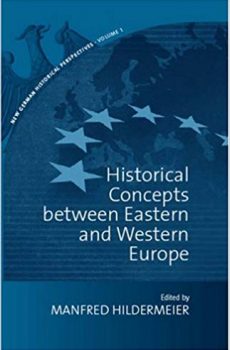
Historical Concepts Between Eastern and Western Europe
8,400.00₹ 3,900.00₹
More than a decade after the breakdown of the Soviet Empire and the reunification of Europe historiographies and historical concepts still are very much apart. Though contacts became closer and Russian historians joined their Polish colleagues in the effort to take up western discussions and methodologies, there have been no common efforts yet for joint interpretations and no attempts to reach a common understanding of central notions and concepts. Exploring key concepts and different meanings in Western and East-European/Russian history, this volume offers an important contribution to such a comparative venture.
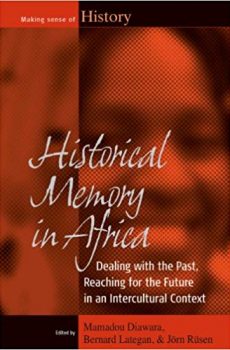
Historical Memory in Africa
8,400.00₹ 5,990.00₹
A vast amount of literature―both scholarly and popular―now exists on the subject of historical memory, but there is remarkably little available that is written from an African perspective. This volume explores the inner dynamics of memory in all its variations, from its most destructive and divisive impact to its remarkable potential to heal and reconcile. It addresses issues on both the conceptual and the pragmatic level and its theoretical observations and reflections are informed by first-hand experiences and comparative reflections from a German, Indian, and Korean perspective. A new insight is the importance of the future dimension of memory and hence the need to develop the ability to ‘remember with the future in mind’. Historical memory in an African context provides a rich kaleidoscope of the diverse experiences and perspectives―and yet there are recurring themes and similar conclusions, connecting it to a global dialogue to which it has much to contribute, but from which it also has much to receive.
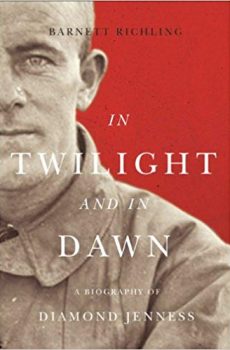
In Twilight and in Dawn
2,800.00₹ 995.00₹
When New Zealand-born and Oxford-educated anthropologist Diamond Jenness set aside hopes of building a career in the South Pacific to join Vilhjalmur Stefansson’s Canadian Arctic Expedition, he had little idea of what lay ahead. But Jenness thrived under the duress of that transformational experience: the groundbreaking ethnographic work he accomplished, recounted in People of the Twilight and in Dawn in Arctic Alaska, proved to be a lasting contribution to twentieth-century anthropology, and the foundation of a career he would devote to researching Canada’s first peoples. Barnett Richling draws upon a wealth of documentary sources to shed light on Jenness’s tenure with the Anthropological Division of the National Museum of Canada – a forerunner of the Canadian Museum of Civilization – during which his investigations took him beyond the Arctic to seven First Nations communities from Georgian Bay to British Columbia’s interior. Jenness was renowned as a pre-eminent scholar of Inuit culture, but he also stood out for the contributions his field work made to linguistics, ethnology, material culture, and Northern archaeology. His story is also an institutional one: Jenness worked as a public servant at a time when the federal government spearheaded anthropological research, although his abiding commitment to the first peoples of his adopted homeland placed him at odds with Ottawa’s approach to aboriginal affairs. In Twilight and in Dawn is an exploration of one man’s life in anthropology, and of the conditions – at the museum, on the reserves, in society’s mainstream, and in the world at large – that inspired and shaped Jenness’s contributions to science, to his profession, and to public life. An informative study of the evolution of a discipline focused through the life of one of its leading practitioners, In Twilight and in Dawn is an illuminating look at anthropological thought and practice in Canada during the first half of the twentieth century.
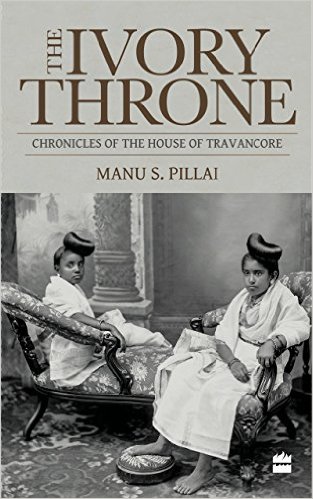
Ivory Throne: Chronicles of the House of Travancore Paperback – 14 Dec 2015
699.00₹ 450.00₹
In 1498, when Vasco da Gama set foot in Kerala looking for Christians and spices, he unleashed a wave of political fury that would topple local powers like a house of cards. The cosmopolitan fabric of a vibrant trading society – with its Jewish and Arab merchants, Chinese pirate heroes and masterful Hindu Zamorins – was ripped apart, heralding an age of violence and bloodshed. One prince, however, emerged triumphant from this descent into chaos. Shrewdly marrying Western arms to Eastern strategy, Martanda Varma consecrated the dominion of Travancore, destined to become one of the most dutiful pillars of the British Raj. What followed was two centuries of internecine conflict in one of India’s premier princely states, culminating in a dynastic feud between two sisters battling to steer the fortunes of their house on the eve of Independence. Manu S. Pillai’s retelling of this sprawling saga focuses on the remarkable life and work of Sethu Lakshmi Bayi, the last – and forgotten – queen of the House of Travancore. The supporting cast includes the flamboyant painter Raja Ravi Varma and his wrathful wife, scheming matriarchs of ‘violent, profligate and sordid’ character, wife-swapping court favourites, vigilant English agents, quarrelling consorts and lustful kings. Extensively researched and vividly rendered, The Ivory Throne conjures up a dramatic world of political intrigues and factions, black magic and conspiracies, crafty ceremonies and splendorous temple treasures, all harnessed in a tragic contest for power and authority in the age of empire.

Kim Jong-Il
1,690.00₹ 650.00₹
Kim Jong-il has been the subject of intense interest and fear in recent months. He has been demonised as ‘Dr Evil’ for his nuclear programme which puts Korea on a collision course with the US. For this reason, the world has a stake in understanding this man and his little-known country. This account aims to tell the compelling story of Kim Jong-il and the country he leads, exploring the pressing question of how he manages to hold onto power in a country that is ravaged by famine and poverty. Unravelling the myths, mysteries, and fallacies that surround this small, desperate country, this fascinating story includes rare photos of Kim Jong-il and his brutal regime.
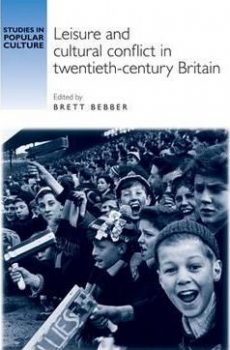
Leisure and cultural conflict in twentieth-century Britain
6,990.00₹ 3,690.00₹
This collection of essays addresses research trends in the history of British leisure while also presenting a wide range of articles on cultural conflict and leisure in the twentieth century. It includes innovative research on a number of topics, including television, cinema, the circus, women’s leisure, dance, football and drug culture. It provides an excellent entry to leisure studies and history, while addressing the contributions of other disciplines and exploring key historiographical trends. Three broad topics structure the collection; cultural contestation and social conflict in leisure; regulation and standardisation; and national identity embodied in leisure and popular culture.
The book will be useful to students and educators of twentieth-century and British history, as it offers accessible and topical studies that pique historical curiosity. In addition, historians, sociologists and cultural analysts of the twentieth century will find it essential for understanding pleasure and recreation in twentieth-century British society.
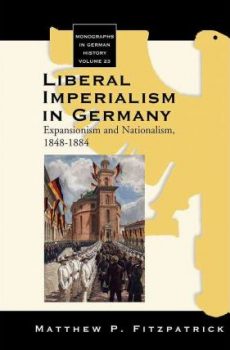
Liberal Imperialism in Germany
8,400.00₹ 3,595.00₹
In a work based on new archival, press, and literary sources, the author revises the picture of German imperialism as being the brainchild of a Machiavellian Bismarck or the “conservative revolutionaries” of the twentieth century. Instead, Fitzpatrick argues for the liberal origins of German imperialism, by demonstrating the links between nationalism and expansionism in a study that surveys the half century of imperialist agitation and activity leading up to the official founding of Germany’s colonial empire in 1884.

Memories of Two Wars: Cuban and Philippine Experiences
1,260.00₹ 950.00₹
Though America did not join rebellious Cuban forces against the Spanish empire until 1898, Frederick Funston (1865–1917) was so moved by a speech by Gen. Daniel Sickles in 1896 that he went to Cuba as a filibuster in the battle for Cuban independence. When the United States finally went to war against Spain, he took command of a regiment, was sent to the Philippine-American War, and received the Medal of Honor for his daring and skill in crossing a river to turn the flank of the Philippine army at the Battle of Calumpit. Two years later, in 1901, he became a national hero for capturing Philippine president and lead insurgent Emilio Aguinaldo. In such roles, Funston was integral to the successful implementation of U.S. policy.
Memories of Two Wars is Funston’s firsthand account of his adventures in the Cuban Revolution and the Philippine-American war. Conversational yet informative, Funston’s memoir relates his experience with the vigor and joviality of a friend sharing war stories over a drink and a cigar. He describes the guerrilla-style combat necessitated by the lack of weapons, the exotic scenery and vegetation of the islands, and the myriad characters—Cuban, American, Spanish, and Philippine—with whom he worked and fought.
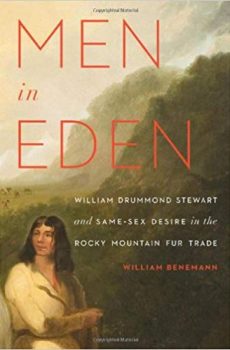
Men in Eden
2,090.00₹ 990.00₹
The American West of the nineteenth century was a world of freedom and adventure for men of every stripe—not least also those who admired and desired other men. Among these sojourners was William Drummond Stewart, a flamboyant Scottish nobleman who found in American culture of the 1830s and 1840s a cultural milieu of openness in which men could pursue same-sex relationships.
This book traces Stewart’s travels from his arrival in America in 1832 to his return to Murthly Castle in Perthshire, Scotland, with his French Canadian–Cree Indian companion, Antoine Clement, one of the most skilled hunters in the Rockies. Benemann chronicles Stewart’s friendships with such notables as Kit Carson, William Sublette, Marcus Whitman, and Jim Bridger. He describes the wild Renaissance-costume party held by Stewart and Clement upon their return to America—a journey that ended in scandal. Through Stewart’s letters and novels, Benemann shows that Stewart was one of many men drawn to the sexual freedom offered by the West. His book provides a tantalizing new perspective on the Rocky Mountain fur trade and the role of homosexuality in shaping the American West.
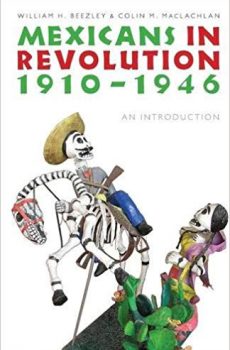
Mexicans in Revolution, 1910-1946
1,390.00₹ 995.00₹
On November 20, 1910, Mexicans initiated the world’s first popular social revolution. The unbalanced progress of the previous regime triggered violence and mobilized individuals from all classes to demand social and economic justice. In the process they shaped modern Mexico at a cost of two million lives.This accessible and gripping account guides the reader through the intricacies of the revolution, focusing on the revolutionaries as a group and the implementation of social and political changes. In this volume written for the revolution’s centennial, William H. Beezley and Colin M. MacLachlan recount how the revolutionary generation laid the foundation for a better life for all Mexicans.
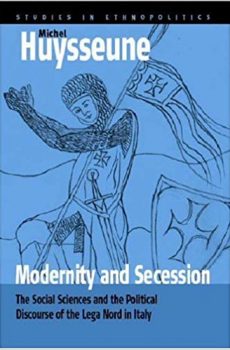
Modernity and Secession
8,400.00₹ 2,550.00₹
The northern Italian, ‘Padanian’ identity, fostered by the Lega Nord, is rooted in the long-standing tradition, in political and scholarly discourse, of casting regional differences within Italy in terms of a North-South geographic divide. Trying to come to terms, in the late 1980s and 1990s, with Italy’s (real or presumed) inadequacies – such as inefficient government, corruption, and organized crime – this imagined geography acquired political centrality in that the North became associated with the virtues of modernity and the South with the vices of un-modernity. It was not only politicians but also social scientists, who fostered and perpetuated this conceptualization of the North-South divide, thus imposing a normative hierarchy between the two parts of the country.
In response to this discourse many scholars, both in Italy and abroad, have started to question this perception of the South as a “backward” and implicitly inferior society. Starting from this critical tradition, Michel Huysseune provides a new, systematic, and interdisciplinary approach that re-interprets the premises behind Italy’s imagined geography of modernity. He moves beyond an understanding of the South as a “backward” and implicitly inferior society and problematizes normative notions of modernity, thus offering a new perspective on the North-South divide, which has a significance well beyond the case of Italy.
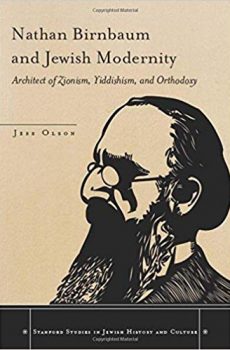
Nathan Birnbaum and Jewish Modernity: Architect of Zionism, Yiddishism, and Orthodoxy
4,550.00₹ 3,690.00₹
This book explores the life and thought of one of the most important but least known figures in early Zionism, Nathan Birnbaum. Now remembered mainly for his coinage of the word “Zionism,” Birnbaum was a towering figure in early Jewish nationalism. Because of his unusual intellectual trajectory, however, he has been written out of Jewish history. In the middle of his life, in the depth of World War I, Birnbaum left his venerable position as a secular Jewish nationalist for religious Orthodoxy, an unheard of decision in his time. To the dismay of his former colleagues, he adopted a life of strict religiosity and was embraced as a leader in the young, growing world of Orthodox political activism in the interwar period, one of the most successful and powerful movements in interwar central and eastern Europe.
Jess Olson brings to light documents from one of the most complete archives of Jewish nationalism, the Nathan and Solomon Birnbaum Family Archives, including materials previously unknown in the study of Zionism, Yiddish-based Jewish nationalism, and the history of Orthodoxy. This book is an important meditation on the complexities of Jewish political and intellectual life in the most tumultuous period of European Jewish history, especially of the interplay of national, political, and religious identity in the life of one of its most fascinating figures.
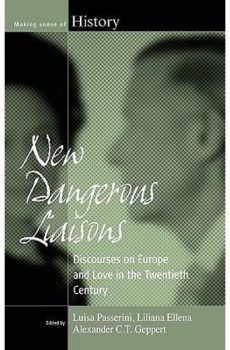
New Dangerous Liaisons
8,400.00₹ 4,400.00₹
In Europe, love has been given a prominent place in European self-representations from the Enlightenment onwards. The category of love, stemming from private and personal spheres, was given a public function and used to distinguish European civilisation from others. Contributors to this volume trace historical links and analyse specific connections between the two discourses on love and Europe over the course of the twentieth century, exploring the distinctions made between the public and private, the political and personal. In doing so, this volume develops an innovative historiography that includes such resources as autobiographies, love letters, and cinematic representations, and takes issue with the exclusivity of Eurocentrism. Its contributors put forth hypotheses about the historical pre-eminence of emotions and consider this history as a basis for a non-Eurocentric understanding of new possible European identities.
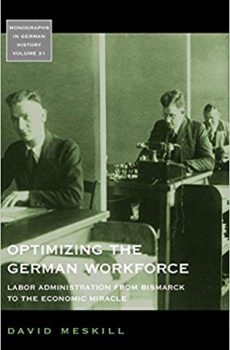
Optimizing the German Workforce
8,400.00₹ 2,080.00₹
During the twentieth century, German government and industry created a highly skilled workforce as part of an ambitious program to control and develop the country’s human resources. Yet, these long-standing efforts to match as many workers as possible to skilled vocations and to establish a system of job training have received little scholarly attention, until now. The author’s account of the broad support for this program challenges the standard historical accounts that focus on disagreements over the German political-economic order and points instead to an important area of consensus. These advances are explained in terms of political policies of corporatist compromise and national security as well as industry’s evolving production strategies. By tracing the development of these policies over the course of a century, the author also suggests important continuities in Germany’s domestic politics, even across such different regimes as Imperial, Weimar, Nazi, and post-1945 West Germany.





















